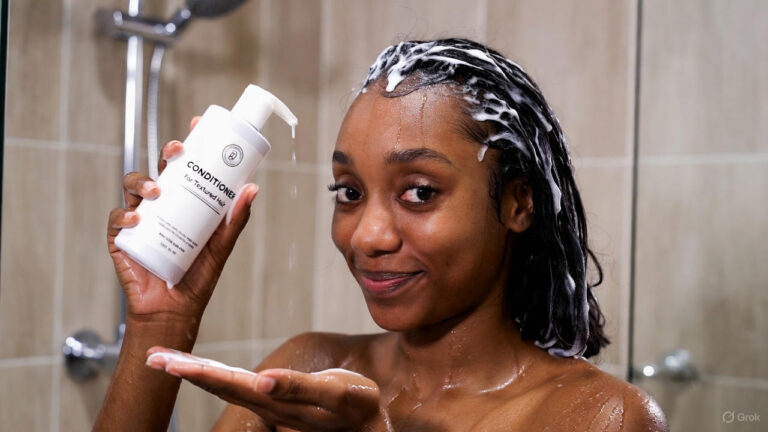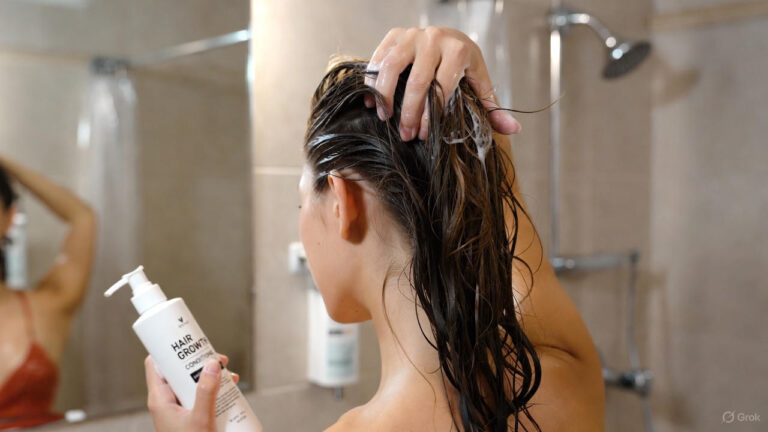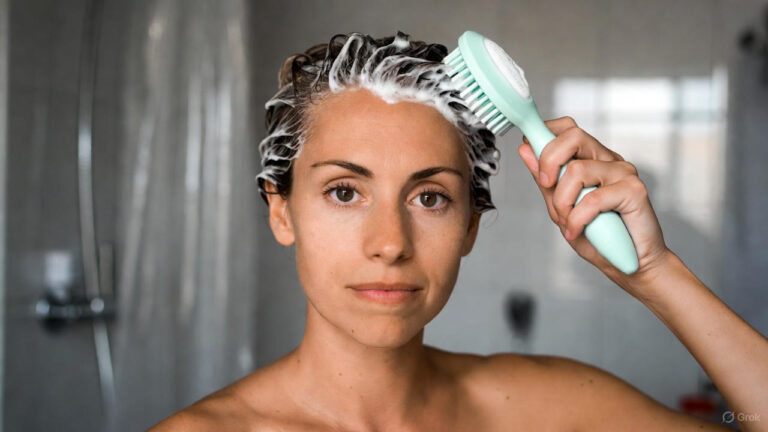Are you ready to embrace a new look and transition from your vibrant purple hair to a stunning blond color? Dyeing your hair from purple to blond can be an exciting adventure, but it requires careful planning and execution to achieve the desired results.
In this comprehensive guide, we will walk you through the step-by-step process of successfully dyeing your hair from purple to blond, ensuring you achieve a beautiful and flawless transformation.
Preparing Your Hair for the Transition
Before diving into the dyeing process, it’s essential to assess the current condition of your hair and understand the color transition process.
Start by evaluating the strength and health of your hair, as this will determine the best approach for the dyeing process. If your hair is damaged or weakened, it’s important to proceed with caution and take extra measures to protect and nourish your strands.
Understanding the color transition process is crucial for setting realistic expectations. Purple hair contains vibrant pigments that can significantly influence the blond dyeing process.
Keep in mind that achieving a perfect blond shade in one session might not be feasible, especially if your hair is deeply saturated with purple. Being patient and embracing a gradual transition is important to avoid damaging your hair.
Gathering the Necessary Materials
To successfully dye your hair from purple to blond, it’s essential to gather all the necessary materials before getting started. Here’s a list of items you’ll need:
- Hair dye and developer selection: Choose a high-quality blond hair dye in the shade that matches your desired blond hue. Additionally, select an appropriate developer strength based on your hair’s current condition and the desired level of lift.
- Protective gear and tools: Prepare yourself with gloves, hair clips, and sectioning tools to help manage the dyeing process effectively. It’s also wise to wear protective clothing and use old towels to avoid any staining.
Preparing Your Hair for the Dyeing Process
Now that you have all the materials ready, it’s time to prepare your hair for the dyeing process. Follow these steps to ensure optimal results:
- Wash your hair: Start by washing your hair with a clarifying shampoo to remove any excess color pigments. This will create a clean canvas for the blond dye. After shampooing, apply a moisturizing conditioner to keep your hair hydrated and manageable.
- Conduct a strand test: Before applying the bleach or lightening agent to your entire head, it’s essential to conduct a strand test. Take a small section of hair and follow the instructions on your bleach or lightening product. This test will help you determine the processing time required and ensure compatibility with your hair.
- Protect your skin and clothes: Apply petroleum jelly or a barrier cream around your hairline and ears to prevent the dye from staining your skin. Additionally, wear an old shirt or wrap a towel around your shoulders to protect your clothes from potential drips or spills.
The Dyeing Process
Now that your hair is prepped, it’s time to dive into the dyeing process. Follow these steps carefully for a successful transition from purple to blond:
- Section your hair: Divide your hair into manageable sections using hair clips. This will make the dyeing process easier and ensure even application.
- Apply the bleach or lightening agent: Mix the bleach or lightening agent according to the instructions provided. Apply the mixture to each section of hair, starting from the roots and working your way down to the ends. Make sure to saturate the hair evenly and thoroughly.
- Process the bleach: Cover your hair with a shower cap or plastic wrap to allow the bleach to process. The processing time will depend on your hair’s condition and the desired lightening level. It’s important to regularly check the progress of the bleach by gently wiping away a small section to see if it has reached the desired lightness. Remember that patience is key, and it’s better to take a gradual approach to avoid damaging your hair.
- Rinse out the bleach: Once the desired level of lightening is achieved, rinse out the bleach using lukewarm water. Make sure to thoroughly rinse all the bleach from your hair until the water runs clear. This step is crucial to prevent any leftover bleach from causing damage or interfering with the blond dyeing process.
- Apply the blond hair dye: Mix the blond hair dye according to the instructions provided. Applying the dye to each section of hair starts from the roots, ensuring complete saturation. Work your way down to the ends, ensuring all strands are covered with the dye.
- Process the dye: Once the hair is fully saturated with the blond dye, cover your hair with a shower cap or plastic wrap to allow the dye to process. The processing time will vary depending on the specific brand and shade of hair dye. Refer to the instructions provided with the dye to determine the appropriate processing time.
Aftercare and Maintenance
Congratulations! You’ve successfully transitioned your hair from purple to blond. To maintain your new blond shade and keep your hair healthy, follow these aftercare tips:
- Rinse and condition: After the processing time is complete, rinse out the hair dye with cool water. This helps seal the cuticle and lock in the color. Apply a deep conditioning treatment to replenish moisture and nourish your hair.
- Styling and heat protection: Avoid excessive heat styling to prevent further damage to your hair. When heat styling is necessary, always use a heat protectant product to minimize the risk of heat-related damage.
- Regular touch-ups and toning: To maintain the blond color, schedule regular touch-up sessions as your roots grow out. Additionally, consider incorporating toning treatments into your hair care routine to keep the blond shade vibrant and eliminate any unwanted brassiness.
Conclusion
Dyeing your hair from purple to blond successfully requires careful planning, patience, and the right techniques. By following the step-by-step process outlined in this guide, you can achieve a flawless transition and embrace your new blond look with confidence.
Remember to assess the condition of your hair, gather the necessary materials, and prepare your hair properly before embarking on the dyeing process. Aftercare and maintenance are equally important to ensure long-lasting results and maintain the health of your hair.
FAQs
1. Can I dye my hair from purple to blond in one session?
Achieving a perfect blond shade in one session is often challenging, especially if your hair is deeply saturated with purple. It’s better to take a gradual approach to avoid damaging your hair. Plan for multiple dyeing sessions spaced out over a few weeks to achieve your desired blond color.
2. Will dyeing my hair from purple to blond damage my hair?
The dyeing process, particularly using bleach or lightening agents, can potentially damage your hair. It’s crucial to assess the condition of your hair and take extra measures to protect and nourish it. Deep conditioning treatments and proper aftercare will help minimize damage and maintain the health of your hair.
3. How long should I wait between bleach and dye application?
After bleaching your hair, it’s important to rinse out the bleach thoroughly and ensure your hair is in good condition before applying the blond dye. Wait at least 24 to 48 hours between the bleach and dye application to allow your hair to recover and minimize the risk of damage. This waiting period will also help you assess the lightening results more accurately before proceeding with the blond dye.
4. How do I prevent my hair from turning brassy during the transition?
Brassiness can be a common issue when dyeing hair from purple to blond. To prevent or counteract brassiness, incorporate toning treatments into your hair care routine. Purple or blue-toned shampoos and conditioners can help neutralize unwanted warm tones and maintain a vibrant, cool blond color.
5. Can I dye my hair from purple to blond at home, or should I seek professional help?
Dyeing your hair from purple to blond can be done at home, but it’s important to proceed with caution, especially if you have limited experience with hair dyeing. If you need more clarification or have concerns about the process, it’s recommended to consult a professional hairstylist who can guide you through the transition and ensure optimal results.



